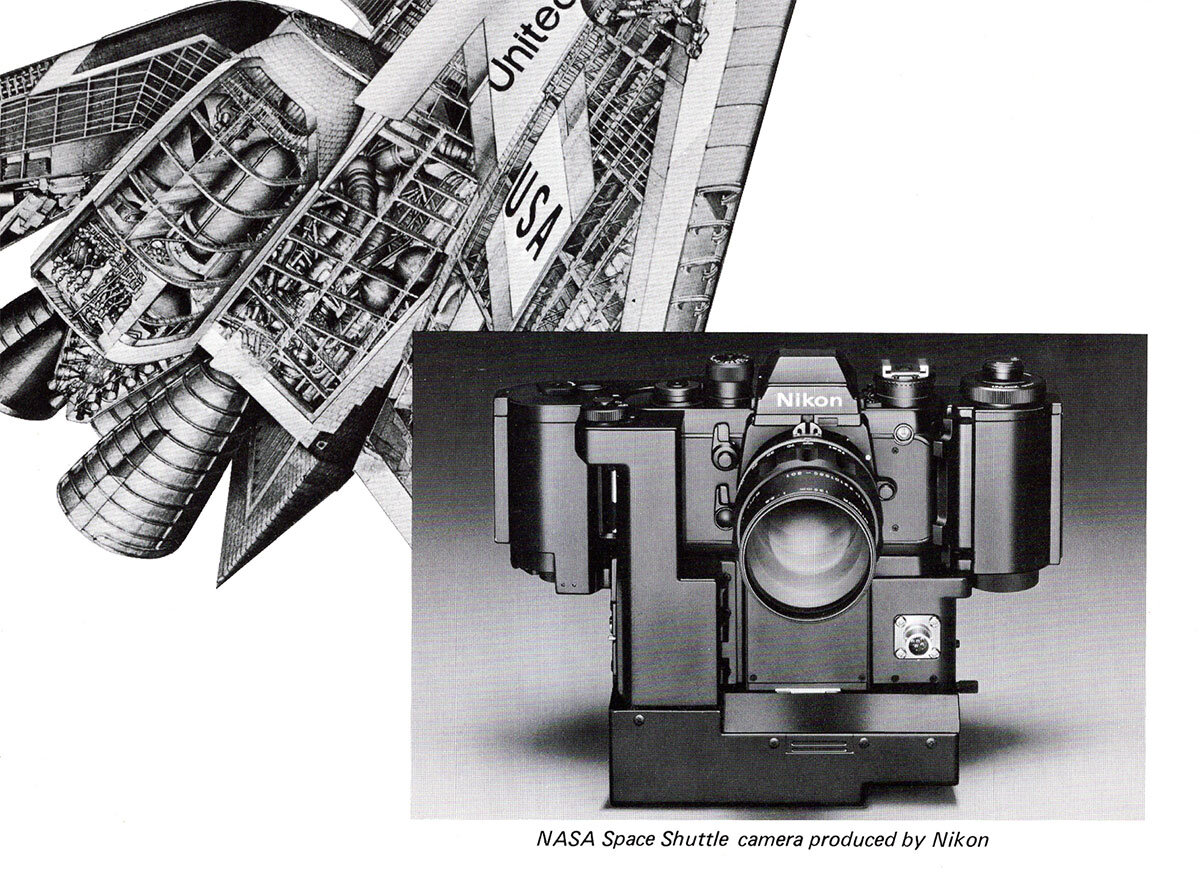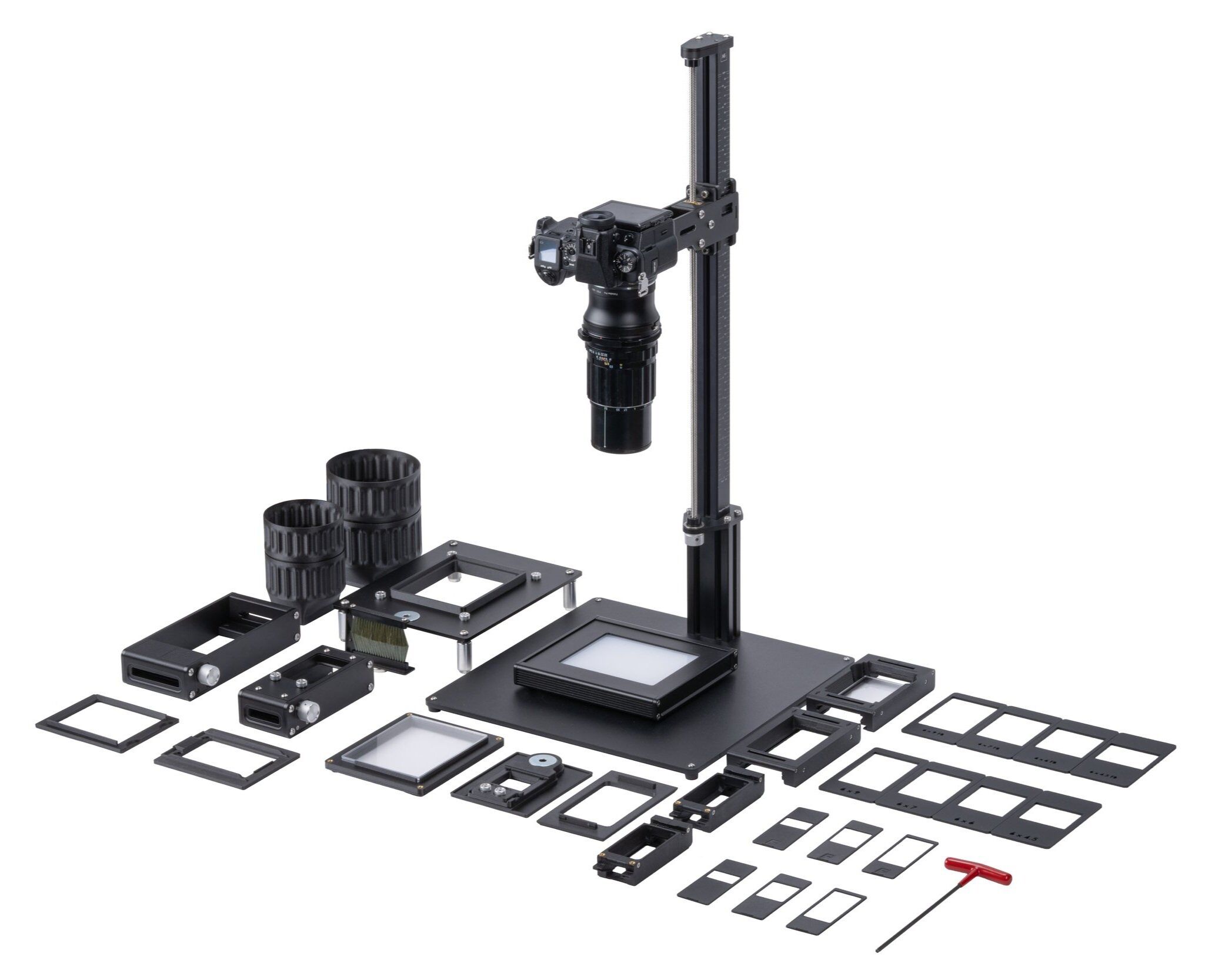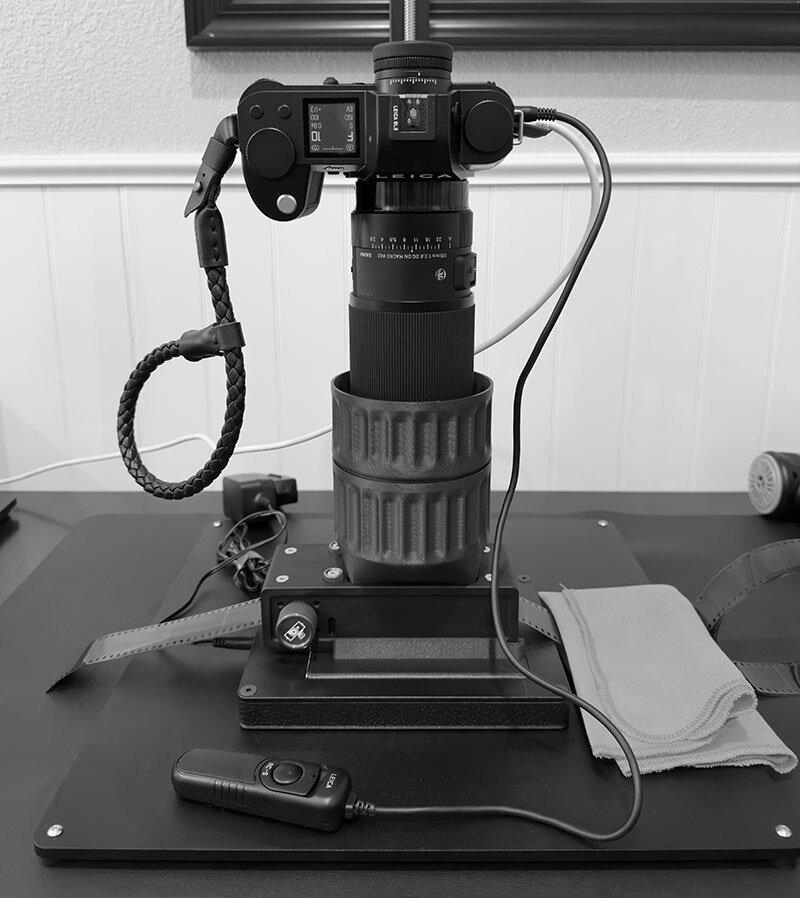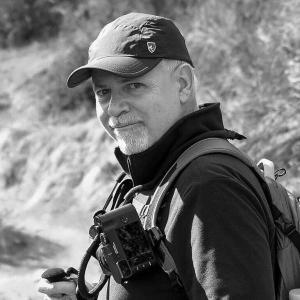In today’s digital age, a renewed interest in analog photography, particularly the timeless allure of black and white film, has sparked a desire to preserve and share these treasures, heightening interest in high-quality negative scanning. Enter the Leica SL3, a cutting-edge mirrorless camera that, surprisingly, offers a powerful and effective way to bring film negatives into the digital world.
Black & white film photography has always been my passion; its timeless appeal is captivating. From the stark beauty of black & white imagery in the film “Oppenheimer” to the iconic rock ‘n’ roll photographs of Jim Marshall capturing the vibrant energy of 1970s San Francisco—Jimi Hendrix, Janis Joplin, and the Grateful Dead—the power of black & white film photography has always resonated deeply with me. Today’s technology has revolutionized my black & white film photography. I use my Nikon F3 to capture timeless analog images and Cox Black & White Lab for my film development. The Leica SL3, Capture One, and Negative Supply kit transforms my negatives into high-resolution digital files, unlocking unprecedented detail and creative opportunities. This seamless blend of analog and digital empowers me to share the unique beauty of black & white film while preserving its artistic essence.
Before delving into the world of digital scanning, it’s worth noting the enduring appeal of classic film cameras like the Nikon F3. Renowned for its robust build quality and mechanical precision, the Nikon F3 has been a workhorse for professional photographers for decades. Pairing it with legendary Carl Zeiss lenses, known for their exceptional sharpness, contrast, and unique character, creates a combination that yields timeless and captivating images. Whether you’re shooting portraits, landscapes, or street photography, the Nikon F3 and Zeiss lenses deliver an image quality that inspires photographers today.
As a dual citizen of the United States and Italy, the story of Giorgetto Giugiaro designing the iconic Nikon F3 resonates deeply with me. It’s a testament to the power of cross-cultural collaboration, where an Italian’s artistic vision breathed life into a Japanese engineering marvel. The sleek lines, ergonomic grip, and signature red stripe—all hallmarks of Giugiaro’s genius—make the Nikon F3 a camera as beautiful to behold as it is. It’s a reminder that creativity knows no borders and that some of the most extraordinary creations are born when diverse minds come together.
Giorgetto Giugiaro is an Italian automobile designer celebrated for his iconic creations, such as the DeLorean DMC-12 and the first Volkswagen Golf. His influence extends beyond cars, having designed everything from cameras to pasta, showcasing his versatility and artistic vision.
Note: The below image is from the Nikon F3 Technical Manual.

Ilford Delta 100 and 400 Professional 35mm black & white films are excellent choices for photographers seeking exceptional detail and sharpness in their film photography. These black & white films are celebrated for their superb grain structure, allowing smooth tonal transitions and remarkable detail rendition. Whether you’re capturing intricate textures or aiming for enlargements, the Ilford Delta 100 and 400 Professional 35mm black & white films consistently deliver impressive results. The film’s versatility makes them suitable for a wide range of subjects and lighting conditions, making them a favorite among experienced film photographers and those new to analog capture.
https://www.ilfordphoto.com/black-white-film/35mm-film
Note: I captured the below image using the Nikon F3, Carl Zeiss 35mm f/2 lens, and Ilford Delta 100 Professional 35mm Film.
Cox Black & White Lab in Rancho Cordova, California, has long been a trusted destination for black and white film photographers seeking exceptional film processing and printing services. Founders Jeff and Katherine Cox have dedicated their careers to the art of black and white photography, and their passion shines through in the quality of their work and their commitment to customer satisfaction. The lab’s knowledgeable staff provides personalized attention, ensuring that each roll of film receives meticulous care and attention to detail. Whether you’re a seasoned professional or a budding film enthusiast, Cox Black & White Lab offers a supportive and welcoming environment for all your black & white photography development needs.
For those looking to take their negative scanning to the next level, the Negative Supply Premium Kit offers a comprehensive and high-quality solution. This kit includes everything you need to digitize your 35mm negatives with exceptional precision and ease. The system’s heart is the Pro Film Carrier 35 MK2, which ensures smooth and consistent film advancement while keeping your negatives flat for sharp scans. The included Light Source Mini provides even illumination for optimal results, while the various accessories like the scanning hood and full border scanning cassette offer additional flexibility and creative options. Whether you’re a professional photographer or a dedicated hobbyist, the Negative Supply Premium Kit can help you achieve stunning digital reproductions of your film work.

Although not initially designed for negative scanning, the Leica SL3 has unexpectedly proven an excellent scanning tool for digitizing film. Let’s explore the key features that make this camera an exceptional choice for transforming your negatives into digital masterpieces.
https://leicacamerausa.com/leica-sl3.html
When selecting a lens for digitizing your negatives with the Leica SL3, the Sigma 100mm Macro L-mount lens is an excellent option. Its sharp optics and 1:1 magnification ratio allow you to capture every detail of your film, revealing textures and nuances that other lenses might miss. The lens’s smooth and precise focusing mechanism ensures critical sharpness, while its close focusing distance allows you to fill the frame with your negative for maximum resolution. Coupled with the SL3’s high-resolution sensor, this combination delivers scans that rival the quality of dedicated film scanners.
Attaching your Leica SL3 to the Negative Supply kit is straightforward. The kit’s copy stand allows for secure mounting of your camera, and the included camera mount adapter ensures compatibility with the Leica SL3. Once mounted, it’s crucial to ensure that the camera’s sensor plane is perfectly parallel to the plane of the negative. Making sure the camera is parallel can be achieved using a bubble level or specialized tools to adjust its position and angle until it is perfectly aligned. This meticulous alignment is essential for attaining sharp and distortion-free scans.
For capturing the highest quality scans, consider the following settings on your Leica SL3:

Consider tethering your Leica SL3 to your computer or tablet for a streamlined and efficient workflow using Capture One software. This setup lets you capture images directly to your computer or tablet, where you can immediately review them on a larger screen and adjust them as needed. Capture One’s powerful raw processing capabilities are ideal for refining negative scans, contrast, and sharpness.
Note: Here is a link to my Capture One B&W Film custom style, which streamlines the process of adjusting each negative to a positive image.
Click here to download the Capture One B&W Film style.
The following images, showcasing the final results of my scanning process, offer a visual testament to the power of merging analog artistry with digital precision, creating a digital catalog of my black & white film photography.
The fusion of classic and modern in my black & white photography—shooting with a vintage Nikon F3, developing with Cox Black & White Lab, then digitizing negatives using cutting-edge tools like a Leica SL3 and Negative Supply Premium Kit—is a testament to the enduring power of analog capture, enhanced by today’s technology.
My story, I believe, stands as a testament to film photography’s enduring power and how modern technology can enhance, not replace it.
Our photography workshops in Yosemite, Point Reyes, and Bodie allow participants to capture stunning images of California’s diverse landscapes, from majestic waterfalls to haunting ghost towns. The collaborative learning environment fosters growth for photographers of all levels. We look forward to offering the following 2025 workshops in California.
Please note we have no affiliation with Leica or Leica Akademie.

© Copyright 2025 LP Workshops • Privacy Statement • Disclaimer